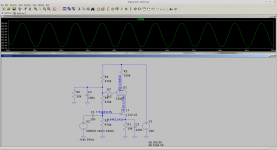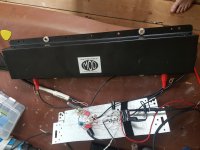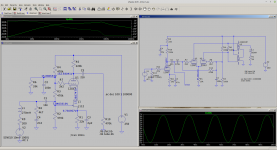I don't think so, just more gain in one stage (and 0.1 A less filament current). With the two triode sections of a 12AX7 (ECC83) you're likely to get way too much gain.
Philips wrote somewhere that the ECC83 was not purposely designed for low noise, so a part of all ECC83's could be noisy (hum, microphonics) at very low input signals. For a design which would be series produced, at low input levels the EF86 would be the best choise. But they also wrote that if you select ECC83's on low noise, than using the ECC83 was no problem.
But don't forget that Philips (Tellegen) invented the pentode. They allways looked a bit biased in favor of pentodes to me.
My guess is that a pentode will be more noisy because of the partition noise, which ofcourse triodes don't have.
Additional: The EF86 has a bifilar spiraled filament, the ECC83 does not. So with ac on the filament, the EF86 will probably do better on hum.
Philips wrote somewhere that the ECC83 was not purposely designed for low noise, so a part of all ECC83's could be noisy (hum, microphonics) at very low input signals. For a design which would be series produced, at low input levels the EF86 would be the best choise. But they also wrote that if you select ECC83's on low noise, than using the ECC83 was no problem.
But don't forget that Philips (Tellegen) invented the pentode. They allways looked a bit biased in favor of pentodes to me.
My guess is that a pentode will be more noisy because of the partition noise, which ofcourse triodes don't have.
Additional: The EF86 has a bifilar spiraled filament, the ECC83 does not. So with ac on the filament, the EF86 will probably do better on hum.
Last edited:
Oddly enough I was not having much trouble with hum at 50Hz even in the input stage and OD. Using a CT transformer and using the half of the 12AX7 away from the heater pins seems to be good. The harmonics from the silicon rectifier get in a little as the HT and heaters share the same mains transformer. I think there is some advantage in not using the same transformer for both. I will try the 12ax7 on the recovery stage. If that is too hissy I may add a JFET first. I will try something loose wired over the weekend and post the schematics for comment.
Last edited:
Besides the theoretical analysis, currently available EF86 are almost unusable in a Guitar amp because they are too microphonic.
To tame that, they are mounted on "floating" sockets (not rigidly bolted to chassis but floating on 2 rubber grommets), have "anti feedback" rubber rings around glass bottle (basically O rings made of thermal resistant silicone rubber) or a combination of the above.
I think that was the idea behind the FET>Triode Reverb recovery chain.
12AX7 in general are fine.
And even so ......
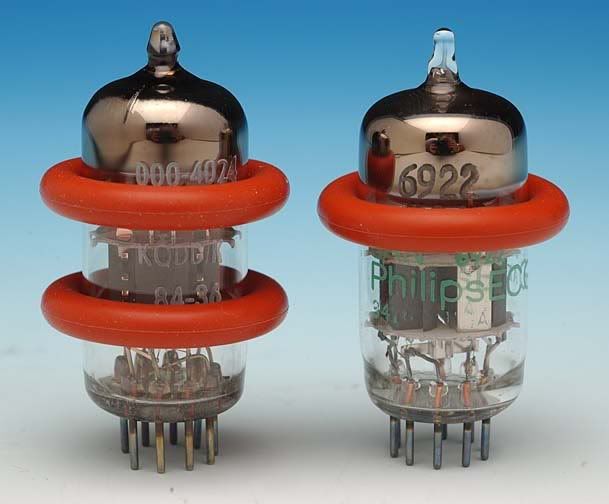
Even biggies have their own:

and for deep pocket audiophools you have these solid gold ones:
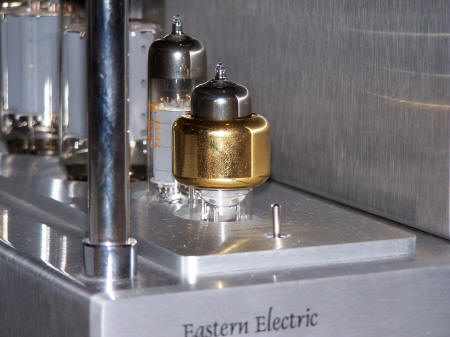
To tame that, they are mounted on "floating" sockets (not rigidly bolted to chassis but floating on 2 rubber grommets), have "anti feedback" rubber rings around glass bottle (basically O rings made of thermal resistant silicone rubber) or a combination of the above.
I think that was the idea behind the FET>Triode Reverb recovery chain.
12AX7 in general are fine.
And even so ......

Even biggies have their own:

and for deep pocket audiophools you have these solid gold ones:

I guess if I have one 12ax7 half left putting it in parallel with the other (with separate cathode resistors and caps) may help the noise a bit. I would like to stay all valve if possible.
Audio Tube Noise Measurements – Tavish Design
Audio Tube Noise Measurements – Tavish Design
Last edited:
- Home
- Amplifiers
- Tubes / Valves
- Driving reverb tank.
